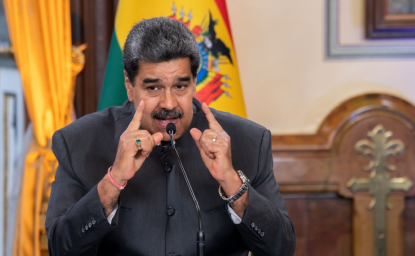The adage “once bitten, twice shy” parallels a Mexican proverb[1], which is particularly relevant in light of the recent, substantial, and unexpected increase in the authorization of public debt for 2024. This decision, aimed at financing the largest deficit in over three decades, recalls the costly economic crises of 1976 and 1982, both of which were precipitated by a lack of fiscal discipline.
However, the current economic landscape of Mexico differs significantly from those times. Since 1982, successive administrations (1982-2018) introduced key structural reforms to build resilience by strengthening both the Mexican economy and its public finances. Yet, the expansionary fiscal policy of 2024, if not carefully managed, poses a substantial risk to Mexico’s hard-earned macroeconomic stability[2] and its investment-grade status.
Authorities assert that the significant increase in fiscal deficit for 2024 is a one-time event. Despite their assurances, this fiscal expansionary policy raises two critical concerns. First, while the size of the 2024 fiscal deficit may be financially manageable, it sets a precedent for an unsustainable 2025 budget if corrective measures are not adopted. Second, the decision to increase debt to finance the 2024 federal budget, although financially feasible, presents a notable contradiction to Mexico's Constitution, potentially undermining the fiscal discipline governance framework and the rule of law.[3] [4] Before delving deeper into these two issues, a brief retrospective of Mexico’s negative past experiences is essential.
Background on Mexico’s recent debt crisis
The economic turmoil experienced in 1976, 1982, and 1995 had a common denominator: each was linked to issues with public debt. The crises of 1976 and 1982, under a fixed-exchange rate regime, were primarily driven by substantial and sustained increases in both domestic and external public debt, accumulated over extended periods to finance widespread subsidies in public goods and services, as well as underperforming investments in more than 1,100 parastatals. Moreover, the crisis in 1982 was intensified by a dramatic worsening of the terms of trade, namely, a significant increase in external interest rates coupled with a drop in oil prices, which wreaked havoc on an economy heavily dependent on oil[5].
In contrast to these two bad periods, in the 1995 crisis, fiscal imprudence was not the cause. Instead, the problems were myriad: the issuance of short-term internal public debt denominated in US dollars, held by foreign investors, within a context marked by a loss of confidence; a crawling-peg exchange-rate regime; foreign reserves at a meager level of less than $29 billion; and a current account deficit that was hovering around 6% of GDP.
In all three cases, Mexico’s economy lost macroeconomic stability, in a fixed-exchange rate system, when its federal public sector (central government and parastatals) was unable to meet its foreign payment obligations, due to the reluctance of creditors to refinance amortizations or foreign holders of domestic public debt[6] unwillingness to refinance. These crises were a powerful incentive to introduce landmark structural reforms, like adopting a free-floating exchange rate, strengthening the independence of the central bank, while improving the governance of the public finance system to promote fiscal discipline.
What are the main concerns with the 2024 surge in Mexico's public debt?
There are two pivotal issues with the current public debt policy: first, the substantial increase and overall size of the deficit for 2024; and second, the notable weakening of Mexico’s fiscal discipline framework, which also contradicts Mexico’s Constitution.
Despite the current stability of the Mexican economy — characterized by a manageable current account deficit, a strong peso in a flexible exchange rate system, significant flows of remittances as well as foreign direct investment, and foreign reserves exceeding $200 billion USD — the federal government's plan to issue 1.9 trillion pesos in domestic public debt to address a 5.7% GDP deficit is concerning.[7] This large deficit suggests an urgent need for increased recurrent revenue to balance recurring expenditures, especially those stemming from an expanded welfare state with constitutional backing.
The end of this federal administration is expected to see a marked increase in Mexico’s federal government public debt, nearing an additional $400 billion. This surge will nearly double the public sector's total debt balance when measured in US dollars. At the same time, recurrent revenues have not kept pace with this increase. On behalf of the current and past administrations’ public debt management, Mexico’s federal government domestic debt now represents around 84% of the total debt outstanding.[8]
Concerning the second issue on governance of the fiscal discipline framework, the significant increase in debt for 2024 being allocated to current expenditures is troubling not just due to its magnitude, but also because it seemingly contravenes the Mexican Constitution, which mandates that public debt should be used for investments generating additional revenue.[9]
A considerable portion of the new debt is allocated to investment projects with low social returns, while the remainder covers increases in pensions, interest payments, subsidies for national oil company Pemex’s debt burden and its monopoly inefficiencies, in addition to the expansion of the new social programs. This non-compliance with Mexico's public finance governance framework undermines the government's credibility regarding the true limits and objectives of running a fiscal deficit, not to mention that, if this represents the beginning of a pattern, it mirrors those observed in past fiscal deficit-driven financial crises.
Mexico's fiscal discipline framework, historically reinforced by Congressional checks and balances, has been weakened. From 1997 until the 2018 election, the lack of absolute majorities in the Senate and the Chamber of Deputies prevented the executive branch from incurring large deficits. Effective governance in public finance, considering realpolitik, seems only truly achievable when Mexico’s Congress is controlled by an opposition majority in at least one chamber.
In addition to these primary concerns, two additional factors contribute to the deterioration of the fiscal discipline framework. First, the Pre-Criterios of 2024 — published in March 2023 as part of the fiscal discipline strategy — anticipated a 2.7% GDP federal public sector deficit versus an authorized 4.9% level for 2024.[10] Second, there has been a noticeable lack of commitment from both the current administration and the two chambers of Congress in adhering to Article 18 of the Ley Federal de Presupuesto y Responsabilidad Hacendaria[11] which requires a public finance impact evaluation for all changes to the legal framework, ensuring sufficient fiscal space for new initiatives.
Preliminary Conclusions and Emerging Issues
The recent developments, in particular the size of the deficit and the non-compliance with the existing fiscal discipline framework, are a definite cause for concern. They set a troubling precedent for the fiscal challenges the new administration will encounter to implement the 2025 budget. These concerns are particularly pressing as 2024 approaches, a pivotal election year in Mexico, featuring presidential, congressional, and nine gubernatorial races.
To avert a cycle of escalating deficits and unsustainable public debt which threatens Mexico's prized macroeconomic stability, comprehensive reform of its public finances is imperative. Such reform, vital for maintaining stability and supporting the new welfare state's costs, should focus on boosting revenue generation and implementing spending cuts or reallocations at all government levels, since there is duplication and even triplication of subsidies. At the federal level, a fiscal adjustment ranging from 2.0 to 3.5% of GDP is essential for a sustainable financial path.
The pro-cyclical fiscal policy proposed for 2024 appears misaligned, especially as the central bank enacts a contractionary monetary policy aimed at reducing inflation to pre-COVID-19 levels, around 3%, while the government continues to spend and stimulate demand. Despite a significant increase in authorized public debt for 2024 — more than a third higher than in 2023 — the recently approved federal government expenditure budget for the upcoming year largely overlooks recent challenges, such as Hurricane Otis's aftermath in Acapulco and the need for state and municipal infrastructure development to leverage nearshoring opportunities.
Currently, Mexico faces no immediate crisis, thanks to its robust external accounts and its resilient private sector production activities. However, the sharp increase in the fiscal deficit for 2024 raises doubts about the credibility of its fiscal discipline framework, established in response to past crises. Preserving and even strengthening this framework is in everyone's interest. Thus, Congress, even with a majority aligned with the executive branch, has a duty and responsibility to prevent unconstitutional authorizations, at the very least, if macroeconomic stability and investment grade do still matter.
[1] “El que se quema con leche hasta el jocoque sopla”. My literal translation: “Someone who gets burned with milk blows even on yogurt”.
[2] The macroeconomic stability bonus has granted Mexico's public finances a budgetary flexibility of over 8% of GDP, a milestone unmatched by any tax reform. This reduction in interest rates, following the historic foreign debt renegotiation of 1989 and the exemplary fiscal discipline that ensued, has led to lower interest payments and, consequently, has created space in the budget to address society's priorities.
[3] Article 73, paragraph VIII states clearly that in a regular fiscal year placing new debt can only be allocated to “public works that increase public revenues”.
[4] The present authorization for 2024 represents a surprise by proposing a significantly larger deficit, and consequently a higher debt request, than what was previously announced in the “Pre-Criterios” document of April 2023. This unexpected deviation highlights a shift in fiscal strategy, which will be difficult and costly to revert.
[5] Oil represented 80% of total exports, while oil-revenues were more than 60% of public revenues.
[6] Those were the famous Tesobonos which were the beginning of the Tequila crisis.
[7] In terms of the whole public sector borrowing requirements the deficit amounts to 5.4% of GDP, while the one for the federal government is 5.7% of GDP. See CGPE for 2024, page 122.
[8] This has been possible due to the pension reform introduced in 1995 by the 1994-2000 administration. Today the Afores, the funds which manage the compulsory retirement savings of Mexican workers in the formal sector, are the most important client of all federal government bonds outstanding. So far, the actual administration has had an adequate management of the public debt in both the domestic and external markets. Foreign debt has reduced its participation in total debt. This 84% contrasts to 37% in 1994, and 77% at the end of 2018.
[9] Mexico’s Constitution allows three exceptions: monetary regulatory purposes; in case of a national emergency and where rights are suspended (article 29).
[10] Secretaría de Hacienda y Crédito Público, “Documento relativo al cumplimiento de las disposiciones contenidas en el Artículo 41, Fracción I, de la Ley Federal de Presupuesto y Responsabilidad Hacendaria, Pre-Criterios 2024,” p. 8, accessed November 14, 2023, https://www.finanzaspublicas.hacienda.gob.mx/work/models/Finanzas_Publicas/docs/paquete_economico/precgpe/precgpe_2024.PDF
[11] Ley Federal de Presupuesto y Responsabilidad Hacendaria. https://www.diputados.gob.mx/LeyesBiblio/pdf/LFPRH.pdf, “Artículo 18.- A toda propuesta de aumento o creación de gasto del proyecto de Presupuesto de Egresos, deberá agregarse la correspondiente iniciativa de ingreso distinta al financiamiento o compensarse con reducciones en otras previsiones de gasto.… Las comisiones correspondientes del Congreso de la Unión, al elaborar los dictámenes respectivos, realizarán una valoración del impacto presupuestario de las iniciativas de ley o decreto, con el apoyo del Centro de Estudios de las Finanzas Públicas de la Cámara de Diputados, y podrán solicitar opinión a la Secretaría sobre el proyecto de dictamen correspondiente. El Ejecutivo Federal realizará una evaluación del impacto presupuestario de las iniciativas de ley o decreto que presente a la consideración del Congreso de la Unión.”
Author

Mexico Institute
The Mexico Institute seeks to improve understanding, communication, and cooperation between Mexico and the United States by promoting original research, encouraging public discussion, and proposing policy options for enhancing the bilateral relationship. A binational Advisory Board, chaired by Luis Téllez and Earl Anthony Wayne, oversees the work of the Mexico Institute. Read more

Explore More
Browse Insights & Analysis
360° View of How Southeast Asia Can Attract More FDI in Chips and AI




